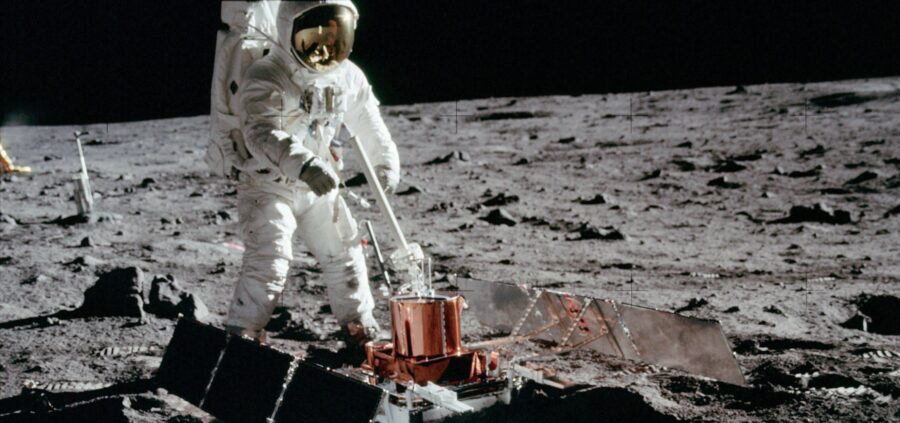A team of planetary scientists has reprocessed Apollo-era seismic data to meet modern forms, ensuring that these precious measurements remain usable for the next generation.

NASA
In the half-century since astronauts walked on the Moon, many of the practices and techniques used by earth-bound planetary scientists have evolved. Recently, a team of planetary scientists reprocessed Apollo-era seismic data to meet modern forms, ensuring that these precious measurements remain usable for the next generation.
Far-Flung Seismographs
The Apollo astronauts left more than footprints when they departed the Moon over fifty years ago. A few of these remnants were abandoned intentionally to continue the scientific mission in the years following each lunar departure: these were the passive seismometers, or devices designed to measure tiny displacements of the ground caused by seismic waves traveling through the Moon’s interior.
Despite the remoteness of their locale and its penchant for destroying complex technology, these instruments performed spectacularly. While they sat patiently listening, each of the five packages recorded numerous lunar quakes and meteor impacts, which collectively demonstrated that the lunar subsurface was a highly fractured, messy arrangement of rock.
Initial Transmission

Adapted from Nunn et al. 2022
The success of these seismometers was hard fought, however, and depended just as much on the ground logistics as it did on the space hardware. The relatively simple instruments could not store data, and instead screamed their findings in real time across the void towards Earth. These shrieks, manifested as radio transmissions, were picked up by NASA’s Deep Space Network and recorded on magnetic reels, which later were copied to cassette tapes and eventually digitized.
This process offered numerous opportunities for errors. For one, the pace of the seismometer’s measurements was not steady, making timestamping each discrete sample difficult. For another, certain sections were missing or duplicated, depending on the number of Deep Space Network dishes able to receive broadcasts. Finally, small sections of data were corrupted each time a magnetic tape was copied over the intervening decades.
As a result, the previously digitized version of the seismometer data was full of holes, repeats, and uneven timestamps. Though it could be used, it could not be imported into modern seismic data processing software and required intimate knowledge of mission specifics not familiar to most practicing planetary scientists.
Cleaning and Archiving

Nunn et al. 2022
In this new study, Ceri Nunn (NASA JPL) and collaborators undertook the Herculean task of extracting the data from the magnetic tapes, massaging them into a modern format, and archiving it digitally for future use. The team states that they “hope that the new archive will make it easier for a new generation of seismologists to use these data to learn more about the structure of the Moon,” and thanks to their efforts, that new generation can lean on the efforts of their predecessors.
The newly archived data can be found here.
Citation
“A New Archive of Apollo’s Lunar Seismic Data,” Ceri Nunn et al 2022 Planet. Sci. J. 3 219. doi:10.3847/PSJ/ac87af
 0
0









Comments
You must be logged in to post a comment.